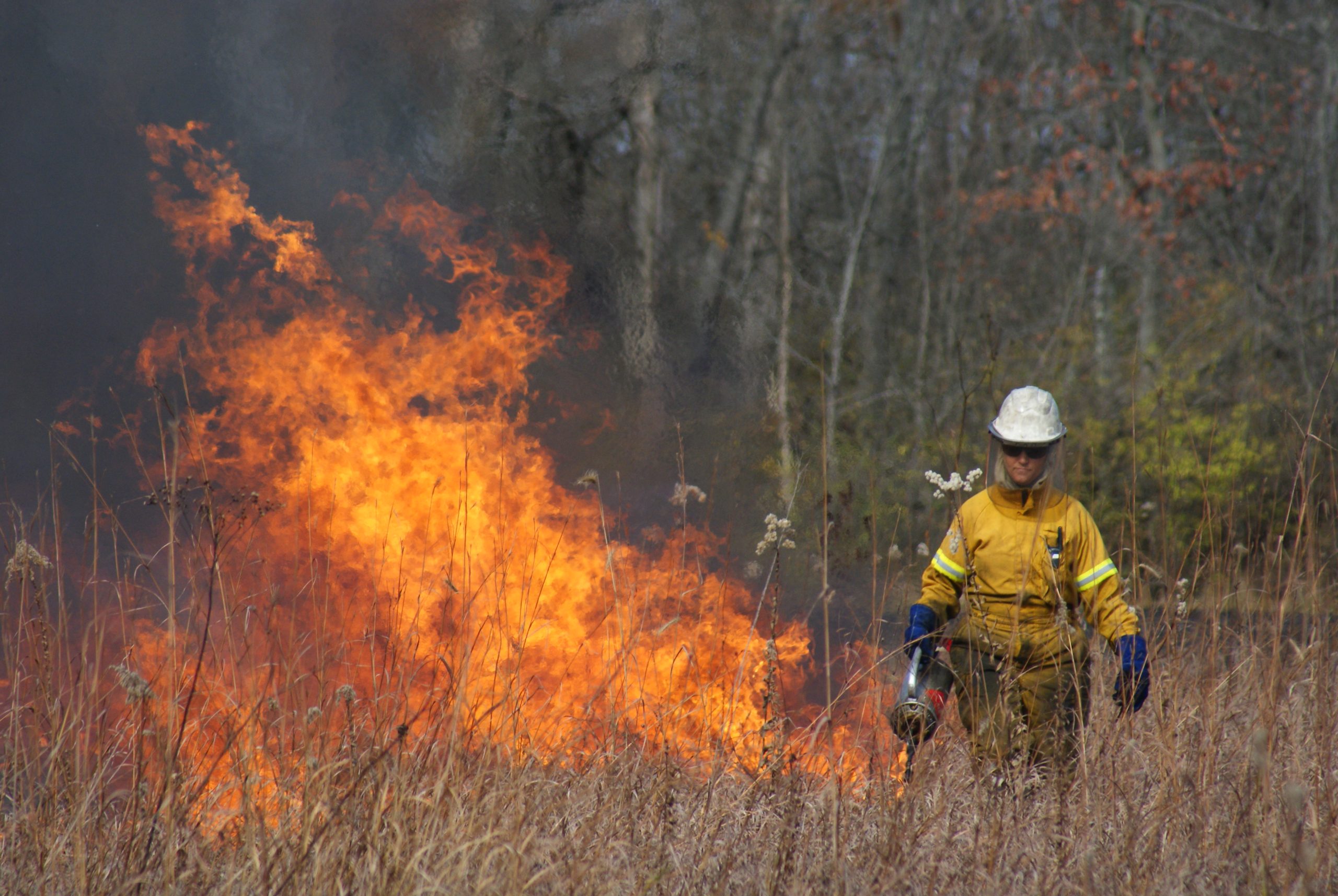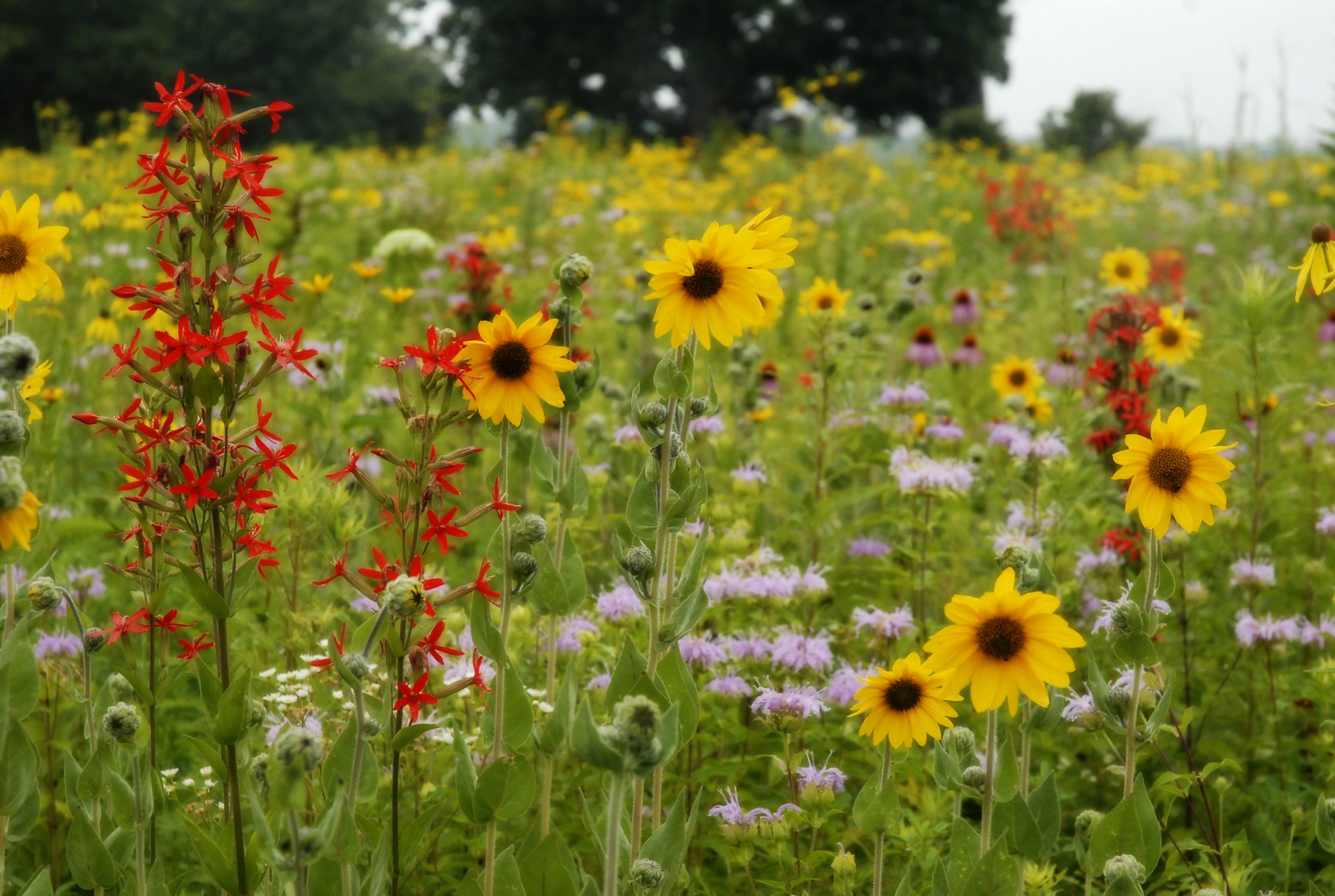CARRIE MORROW
Assistant Resource Manager
The season of harvest is upon us and the weather has turned frosty and cool. It’s burn season. Whether originally ignited by lightning or intentionally set by Native Americans and pioneers, prairie habitats developed over thousands of years in an environment where fire played an integral role in maintaining these areas for a wide diversity of species.
In an effort to replicate what might have occurred historically, Metro Parks’ staff complete prescribed burns on a rotating schedule every two to five years based on specific management goals for the area. Land managers also complete prescribed burns throughout the parks in spring.

Prescribed burns not only rejuvenate prairies but they also inhibit invasive species and boosts new growth of native plants so that we can enjoy prairies brimming with colorful grasses, flowers and plants in summer.
Each year these plants send new growth and over the year, thick thatch develops that prohibits animal movement and blankets the ground from new seeds to germinate. Working with the wind, fire is set to the dried plant material against the wind. This allows the fire to burn slowly and is known as a “backfire.” This fire is set on the backside of the burn unit into the wind and usually has a short flame height and burns slowly.
The two teams move in opposite directions on the backside of the unit continuing to slowly burn small portions of fuel. This is continued until an area referred to as a “black line” of consumed fuel is established. This is an important part of a prescribed burn, since this area will hold the larger fire later. As the teams reach the opposite sides of the burn unit, they begin to move parallel to each other setting what is called a “flank fire.” This type of fire is set parallel with the wind and is also a low, slow moving fire that is used to eliminate fuel and secure the edges of the burn unit. This black line and flanks will be the boundary for the head fire.

The final phase is setting the “head fire.” This fire is set with the wind behind it. Fast moving, tall flames and very high temperatures characterize a head fire. It’s lit when the black line and flanks are in and the fire can essentially burn into itself. This is an impressive visual aspect of a prescribed fire oftentimes with flames in excess of 30 feet tall and the sound of a freight train as it moves across a prairie area. While it appears to be a raging fire, as it reaches the black line at the other end of the unit, it quickly smothers itself since all the available fuel has been consumed.
The blackened earth will create a warming effect for new growth and germinating seeds. The fires eliminate young trees and shrubs and other invasive plant species. This allows the prairie wildflowers and grasses to be rejuvenated and become more abundant.
Prescribed burning is a tool used by certified prescribed burn managers. Trained staff members, usually in teams of 10-12, conduct these prescribed fires. The proper equipment, safety gear and experienced personnel help to make this a useful tool for the management of our large prairies and wetlands. Sites are prepared prior to the burn with mowed firebreaks to create safe areas for team members and equipment as the burn is conducted.
Prior to any prescribed burn, permits must be acquired from the Ohio Division of Forestry, Ohio Environmental Protection Agency and some local fire departments. Metro Parks coordinates all prescribed burn operations with local fire departments.

It would be nice to know the schedule, so I can avoid the park during a burn
So can I come watch the burns? If so, when and where?
I’d like to know that as well
We just finished burns for the week and aren’t sure when the next one will be. It’s all weather dependent. Thanks!